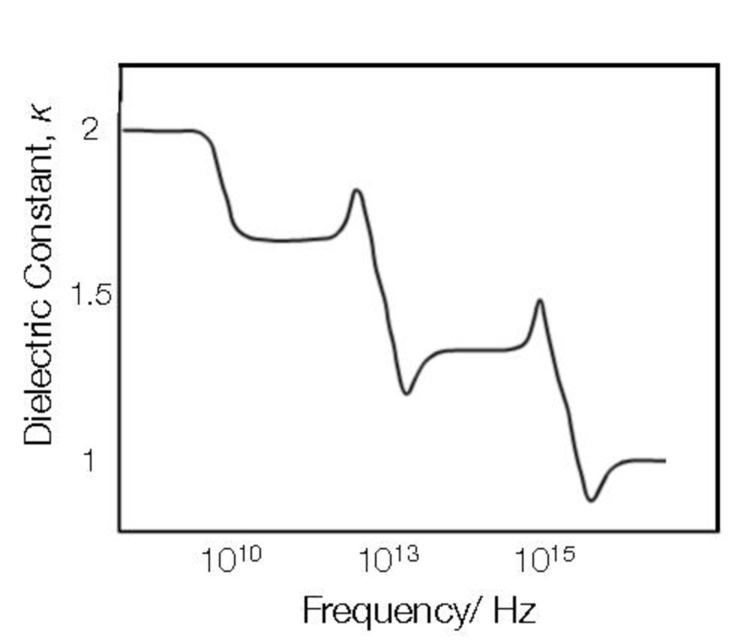 | ||
In electricity (electromagnetism), the electric susceptibility
Contents
Definition of volume susceptibility
Electric susceptibility is defined as the constant of proportionality (which may be a tensor) relating an electric field E to the induced dielectric polarization density P such that:
where
The susceptibility is related to its relative permittivity
So in the case of a vacuum:
At the same time, the electric displacement D is related to the polarization density P by:
Molecular polarizability
A similar parameter exists to relate the magnitude of the induced dipole moment p of an individual molecule to the local electric field E that induced the dipole. This parameter is the molecular polarizability (α), and the dipole moment resulting from the local electric field Elocal is given by:
This introduces a complication however, as locally the field can differ significantly from the overall applied field. We have:
where P is the polarization per unit volume, and N is the number of molecules per unit volume contributing to the polarization. Thus, if the local electric field is parallel to the ambient electric field, we have:
Thus only if the local field equals the ambient field can we write:
Otherwise, one should find a relation between the local and the macroscopic field. In some materials, the Clausius–Mossotti relation holds and reads
Ambiguity in the definition
The definition of the molecular polarizability depends on the author. In the above definition,
In this second definition, the polarizability would have the SI unit of C.m2/V. Yet another definition exists where
Using the cgs units gives
Nonlinear susceptibility
In many materials the polarizability starts to saturate at high values of electric field. This saturation can be modelled by a nonlinear susceptibility. These susceptibilities are important in nonlinear optics and lead to effects such as second harmonic generation (such as used to convert infrared light into visible light, in green laser pointers).
The standard definition of nonlinear susceptibilities in SI units is via a Taylor expansion of the polarization's reaction to electric field:
(Except in ferroelectric materials, the built-in polarization is zero,
The nonlinear susceptibilities can be generalized to anisotropic materials (where each susceptibility
Dispersion and causality
In general, a material cannot polarize instantaneously in response to an applied field, and so the more general formulation as a function of time is
That is, the polarization is a convolution of the electric field at previous times with time-dependent susceptibility given by
It is more convenient in a linear system to take the Fourier transform and write this relationship as a function of frequency. Due to the convolution theorem, the integral becomes a simple product,
This frequency dependence of the susceptibility leads to frequency dependence of the permittivity. The shape of the susceptibility with respect to frequency characterizes the dispersion properties of the material.
Moreover, the fact that the polarization can only depend on the electric field at previous times (i.e.
